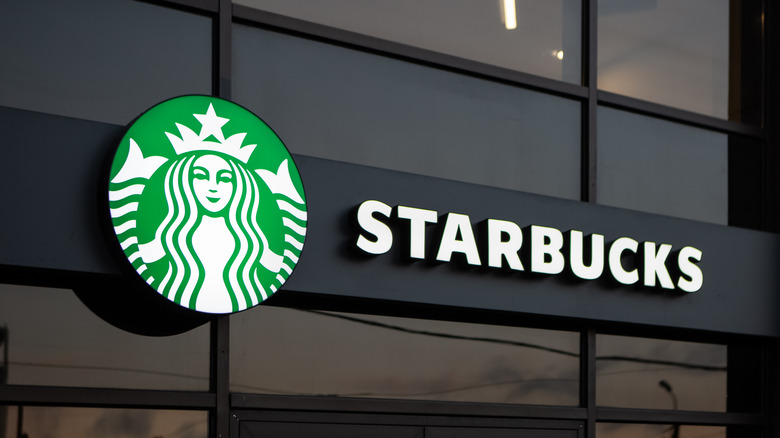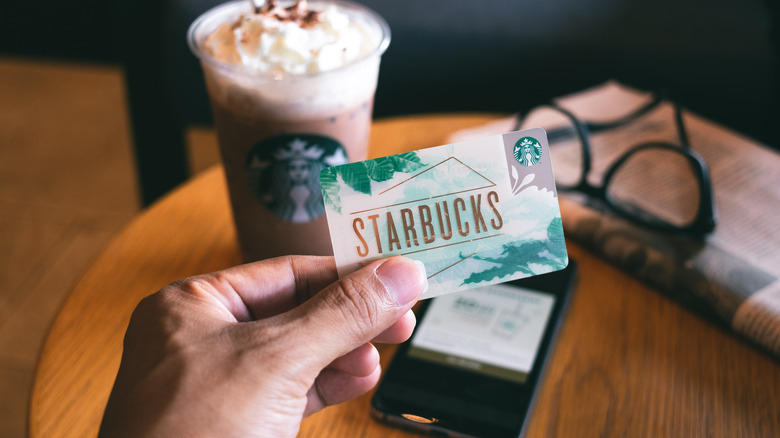The Hidden Detail About Starbucks That You Never Realized
Starbucks has been operating like a bank, at least since 2001, when it first began offering gift cards that could be redeemed for java and snacks. Initially reported by Forbes in 2016, the coffee chain has been slowly building outstanding debt in the form of gift cards and through its Starbucks Rewards program, and it hasn't slowed down since. Thanks to the rewards program, the company has racked up over $1 billion in outstanding funds to over 27 million members, according to a Starbucks earnings call as recently as March.
The money is split two ways: between physical gift cards and digital rewards. Finextra reported in April that Starbucks' rewards program is the largest loyalty program in the world. The company has a well-recorded history of driving up real estate market value in cities across the world, so it makes sense that the coffee giant could also drive a highly successful rewards program, especially when gift cards are such a common gift between friends and family members.
Granted, Starbucks has been able to get away with its debt-based business model by selling one thing: coffee. Economic pressures driven by the COVID-19 pandemic aside, people do still need their coffee fix, and there's no reason to expect that to slow down, even with fuel prices steadily rising.
How the rewards program saved Starbucks
Things weren't always so successful for the coffee giant. In 2008, the financial downturn caused by the housing market collapse forced Starbucks to reassess its marketing strategy, according to Business Insider. The company realized that it was able to drive up the value of homes, later thought to result in increases in housing value up to about 96%, by way of proximity. This phenomenon is now called "The Frappuccino Effect." However, retaining that value was a challenge that Starbucks would need to tackle in order to stay ahead of inflation. CEO Howard Schultz is lauded as something of a hero among shareholders for spearheading many of the innovations that carried the company into the future, including closing over 900 underperforming locations. But his introduction of the Starbucks Rewards program was revolutionary.
Fast-forward to present day, Starbucks is able to sustain its gift card and rewards programs across over 17,700 worldwide locations because of the relationship between the programs and the international customer bases (via Motley Fool). If customers put money into the gift card "bank," so to speak, they're contributing directly to Starbucks' profits. When they return to redeem those funds, they'll create more business, which in turn generates even more profit.

